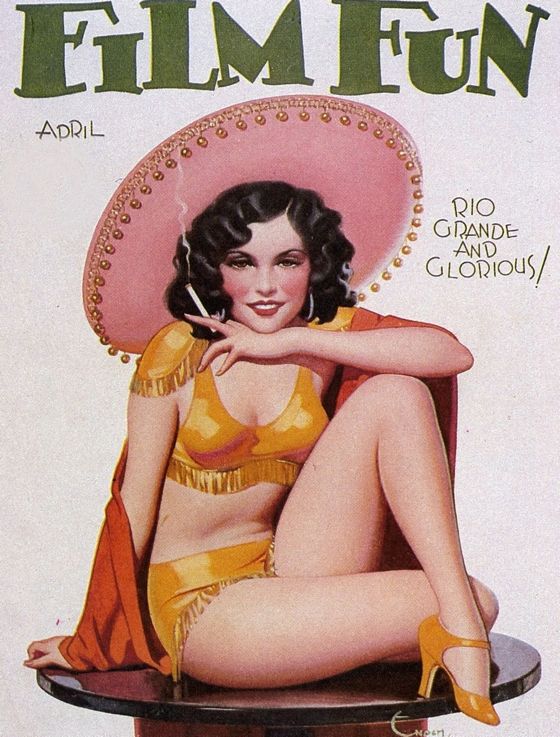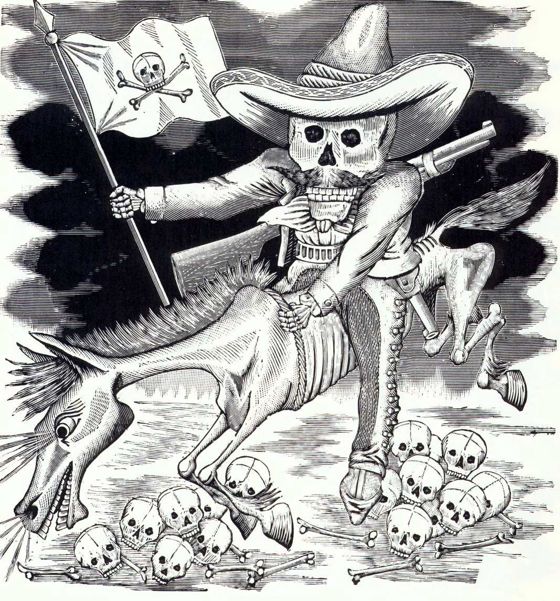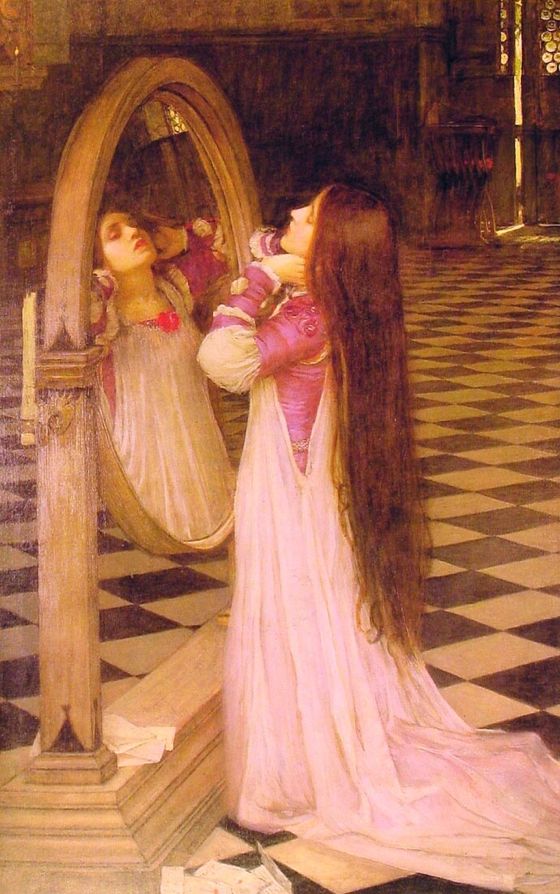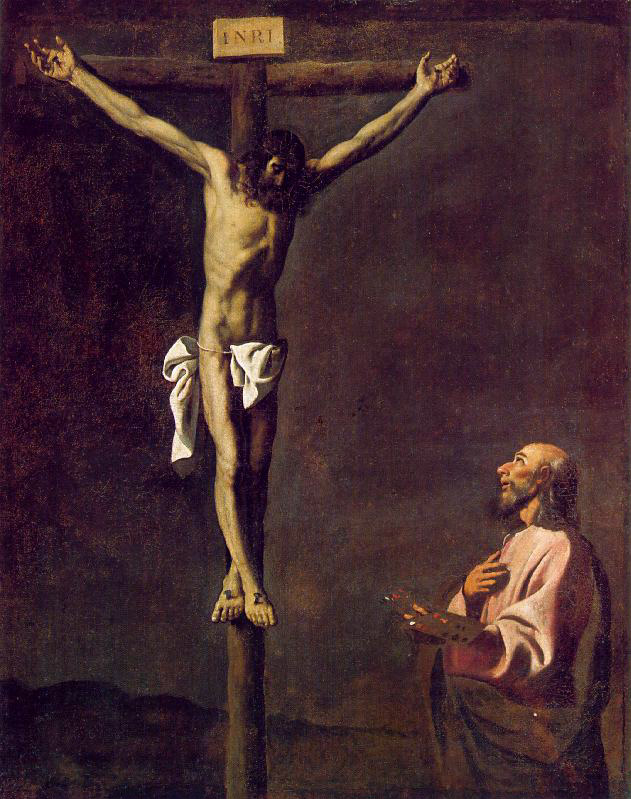
. . . down Mexico way.
Happy Cinco de Mayo.


Zapatista calavera, by José Guadalupe Posada, early 20th Century.

Percy Bysshe Shelley howls at the moon:
Art thou pale for weariness
Of climbing heaven and gazing on the earth,
Wandering companionless
Among the stars that have a different birth,
And ever changing, like a joyless eye
That finds no object worth its constancy?
[Image by John William Waterhouse.]
Red River Valley
The composition is a bit static, though I guess you could also call it monumental, iconic. Pretty cool, all the same.
Here's something you don't run across every day . . .
[Image by Edmund Blair Leighton from the gallant Golden Age Comic Book Stories.]
. . . the Jesus of the Gospels was transformed into some sort of cavalry or Boy Scout troop leader, complete with guidon. He's ready for business, church business, getting the organization in line.
This fresco by Piero della Francesca is a great work of art — Aldous Huxley once called it “the best picture in the world” — but I defy anyone to be moved by it, except on an aesthetic level. Easter is happening somewhere else . . . or so I've heard tell.
This is Arnold Böcklin's Mary Magdalene Weeping Over the Dead Christ. Almost everything about it strikes me as wrong — psychologically, dramatically, narratively, even theologically. The translucent black mantle lends the image a perverse erotic quality. The Magdalene's grief seems melodramatic, almost self-involved — the beautiful figure of the dead Christ becomes a prop for a diva.
And yet . . . it delivers a grisly, Gothic frisson, of the sort Böcklin specialized in, unsettling, macabre. It's hard to stop looking at it.

For Francisco de Zurbaran, Spanish artist of the 17th Century, painting Jesus on the cross was in some sense the same as standing before Jesus on the cross. The figure with the palette is said to be Saint Luke depicted as a painter, but surely Zurbaran was painting himself into the crucifixion scene — seeing his witness with oil paints as the virtual equivalent of eyewitness testimony.
I don't know if they do that kind of thing anymore.
Kendra Elliott, star of two essays on cinema by Jae Song from Majestic Micro Movies , draws remarkable pictures and has a blog, Human Faced Dog.
This has been a public service announcement.